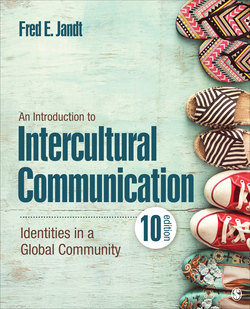Читать книгу An Introduction to Intercultural Communication - Fred E. Jandt - Страница 68
На сайте Литреса книга снята с продажи.
Cultural Awareness.
ОглавлениеTo be competent in intercultural communication, individuals must understand the social customs and social system of the host culture. Understanding how peoples think and behave is essential for communication with them.
In Chapter 1, you read that the definition of communication itself reflects the culture defining it. In a like manner, the understanding of intercultural communication competence reflects the culture defining it. Consider how it might be defined in high-context, collectivistic cultures. C. M. Chua (2004) showed that intercultural communication competence in collectivistic Malaysian culture differs from Western definitions in that in Malaysia there is more emphasis on relational issues. Komolsevin, Knutson, and Datthuyawat (2010) explain this by showing that people in high-context cultures are hesitant to engage in communication—that is, they are reserved and silent—until they have sufficient information to encode messages appropriate for the receiver. So being quiet and reserved in Malaysia and Thailand is a necessary first step for the competent intercultural communicator. But that same behavior might be evaluated negatively in more individualistic cultures.
Rhetorical sensitivity (R. P. Hart & Burks, 1972) refers to a communicator’s attitudes about how to encode messages for the best receiver understanding and effect. The theory of rhetorical sensitivity describes three types of communicators (Darnell & Brockriede, 1976):
1 Noble selves—view themselves as the primary basis for communication choices; egotism and individualism communicating messages with little regard to the effect on the receiver
2 Rhetorical reflectors—view the desires and needs of the others as the primary basis for communication choices; display behavior believed to be desirable by the receiver
3 Rhetorical sensitives—combine concern for self with concern for others to encourage engagement in making decisions as to how to communicate
Komolsevin and colleagues (2010) use this theory to explain that Thais use rhetorical reflection to build rhetorical sensitivity. In Thai culture, the development of the relationship contributes to intercultural communication competence.
